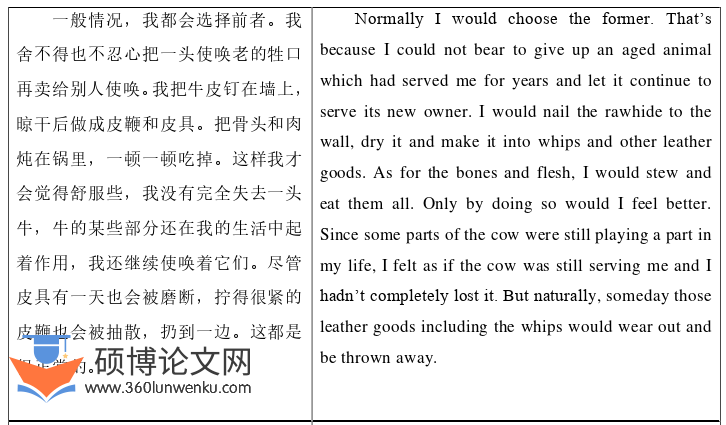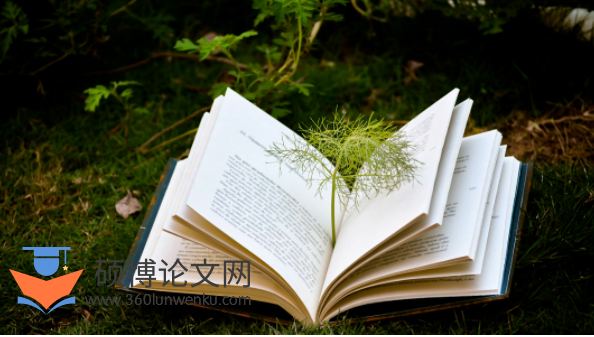本文是一篇英语论文,笔者通过具体的案例分析,证明了功能对等理论指导散文翻译的可行性。本文对中国当代散文的翻译实践进行分析和总结,以期为中国当代散文的英译及研究提供一定参考和借鉴。
Chapter One Introduction
1.1 Project Background
Nowadays, China has attracted more and more attention from other countries for its growing hard power. Its soft power, however, is not that influential. Today, the country still faces cultural trade deficit, which indicates that it has to take some measures to further promote Chinese cultural products to the international market. Since literary work is a significant cultural product, the translation of it is especially crucial. With the aim to narrow the cultural trade deficit and improve China’s cultural soft power, translators have to play their part. Because of the widely-known fact that modern prose is a noteworthy literary genre in literature, along with the lack of research into prose translation, the study of the translation of modern Chinese prose is undoubtedly necessary. Considering that translation practice is usually guided by at least one translation theory, the translator hence chose Nida’s functional equivalence theory, which is extensively regarded as a pretty helpful guidance on translation. “In fact, Nida’s statements under the heading of Dynamic Equivalence have been widely accepted and cited by translation scholars and practitioners regardless of their religious faith or academic/practical interests.” (Kim, 2015, p.61) Ni & Yang (2004) also spoke highly of functional equivalence theory and analyzes its applicability to translation practice. Therefore, this report tries to analyze the English translation of three modern Chinese essays under the guidance of Nida’s functional equivalence theory.
......................
1.2 Significance of the Project

英语论文怎么写
Taking Nida’s functional equivalence theory as the theoretical basis, this report analyzes how the translation of rhetorical devices and artistic conception of three Chinese essays can achieve functional equivalence. It also shows emotions in prose can be conveyed to target readers with the help of some translation techniques. It can be said that this report has certain theoretical and practical significance. Theoretically, this report may help people have a better understanding of functional equivalence theory. This theory has usually been applied in the translation of other types of text while merely a few people choose to use it as a tool to guide Chinese prose translation. Accordingly, this report is of great importance for it may let more people realize how instructive the theory can be in prose translation. Pragmatically, by exploring a myriad of translation techniques and strategies, this translation report may give useful reference to people who are going to translate modern Chinese prose. Translators can learn to employ those techniques and skills in similar texts in their future translation practice. What’s more, this translation project can provide foreigners with information about village life in China as well as Chinese living philosophy. Hence, this project may be conducive to disseminating Chinese culture and enhancing communication between China and western countries.
.............................
Chapter Two Project Implementation
2.1 Pre-translation
As an arduous task, translation normally requires considerable effort. Actually, translators have a lot to prepare before they start to translate since pre-translation preparations lay the foundation for all further translation efforts. Therefore, before translating, the translator first looked through the book to have a general understanding of the writing style. After that, the translator chose three representative ones among dozens of essays and began searching for more information about both the original author and the original text. The author Liu Liangcheng is a well-known prosaist who has earned a considerable reputation. And the source text of this transition project is a record of his life experience in his hometown Xinjiang as well as his thoughts on life and death.
Afterwards, the translator carefully read a large number of parallel texts and learned a lot from previous studies on the translation of modern Chinese prose. The translator has not only realized the importance of paying attention to cultural-bound words and phrases, textual gird, texture, rhyme and so on but also accumulated a myriad of useful translation methods, skills and strategies. At last, the translator read many translation theories and eventually chose Nida’s functional equivalence theory as the guidance on this Chinese-English translation practice. Since the introduction of Nida’s translation theories to China in the 1980s, they have aroused numerous scholars’ interest in translation theories. As time went by, Nida’s functional equivalence theory has been gradually applied in many types of translation activities including literary translation. And nowadays there are an increasing number of studies on the applicability of functional equivalence theory in the translation of modern Chinese prose. For example, Luo (1994) has analyzed the applicability of functional equivalence theory to literary translation from four perspectives.
.........................
2.2 While-translation
With all the preparations done, the translator began her work with the assistance of electronic dictionaries and some search engines, which have played a significant role in the translation process. To be more specific, Online Oxford Dictionary, Collins Dictionary and Merriam-Webster Dictionary have helped a lot in the competition of this translation project. Bearing the functional equivalence theory in mind, the translator has tried her best to find the most equivalent words and phrases. But in many cases, it’s pretty difficult to find counterparts in English. To solve this problem, the translator had applied explanatory words and phrases to reproduce the core meaning. After that, the translator put these phrases in the search engine Google and Bing to check if these expressions are idiomatic.
Besides, for some colloquial words and unique expressions in Chinese, the translator had strived to figure out the exact meanings and convey them to target audience so that they could have the same response as source readers do. For instance, sometimes dialects are used in the source text. To make sure these dialects’ meanings are appropriately reproduced, the translator searched them in Baidu and found out their exact meanings.
While translating reduplicative words, the translator has racked her brain to find the best way to not only convey their meanings but also reproduce the phonetic beauty. In the end, the translator resorted to some rhetorical devices such as alliteration, end rhyme, etc., which has added some phonetic beauty to the target text to some extent. She has also made use of various translation strategies and skills, including division, combination, addition, omission and so on.
..................................
Chapter Three Modern Chinese Prose and Its English Translation ................................ 8
3.1 Definition of Prose ........................................................................................................ 8
3.2 Characteristics of Modern Chinese Prose ......................... 8
3.3 Studies on Prose Translation ..................................... 9
Chapter Four Case Study ..................................... 1
4.1 Rhetorical Devices .................................................... 12
4.1.1 Reduplicative Words ........................................ 12
4.1.2 Metaphors and Similes ............................ 14
Chapter Five Conclusion ............................... 33
5.1 Major Findings ..................................... 33
5.2 Limitations and Suggestion....................... 34
Chapter Four Case Study
.4.1 Rhetorical Devices
Figure of speech is a creative use of language to generate a certain effect. It can add richness and beauty to expressions, make writings more artistically appealing, and turn the depicted things into a vivid image in mind. As a fairly useful tool, is frequently employed in modern Chinese prose, which often brings great difficulties to translation. Zhou (2015) deemed it primary to preserve the beauty of the original text in the process of prose translation. And Liu (2002, p.87) believed that “when evaluating the quality of a translation work, we need to consider whether the words and sentences translators use conform to the target language’s expression habits. Furthermore, we should consider if the artistic flavor of the original text is reproduced.” As rhetorical devices definitely play a g

英语论文参考
.......................
Chapter Five Conclusion
5.1 Major Findings
For a start, the translator has attained a deeper understanding of the source text after the completion of this translation project. My Loneliness in the Crowd is a collection of essays which talk about the author’s hometown and his life experience. In this book, Liu tells many nostalgic memories and his deep love for his hometown in a plain and concise language. This book is charming not only for the author’s sincere emotions, but also for the great beauty in terms of rhetorical devices and artistic conception.
Moreover, although this translation project is pretty difficult, the translator has managed to accomplish it with the assistance of a variety of translation methods and techniques, including the addition of footnotes, restricting and so on. This practice has again proved that the reliance on one specific translation method from beginning to end is absolutely inadvisable. Translators are expected to analyze the characteristics of the source text first and then carefully think about what methods to use according to the translation purpose. Since this translation project is completed under the guidance of Nida’s functional equivalence theory, the translator has attached great importance to target readers’ response and strived to balance the TT’s smoothness and faithfulness while performing her job. Nida emphasizes that translation should first aim at reproducing the message of the ST, which means reproducing both the meaning and the style of the ST. Hence, the translator has made strenuous efforts to find the closet natural equivalent to deliver the meaning and style of the ST so that the receptors in the target language can react in substantially the same manner as the receptors in the source language.
reference(omitted)
